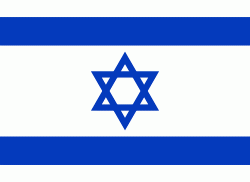Kaukab Abu al-Hija (Kaukab Abū el Hījā)
Kaukab Abu al-Hija (كوكب أبو الهيجا; כַּוּכַּבּ אַבּוּ אל-הִיגַ'א), often simply Kaukab, (meaning "star" in Arabic), is an Arab Muslim village and local council in the Northern District of Israel, in the Lower Galilee. It is located on Road 784, between Shefa-'Amr and Karmiel, and north of Kafr Manda. Kaukab was historically under the control of the Abu al-Hija family of the Galilee.
In it had a population of, and in 2008 was ranked low (3/10) on the Israeli socio-economic scale. Its jurisdiction is 2,567 dunams.
It is possible to discern the ruins of Greek, Roman, and Byzantine settlements on Kaukab's location, and it might be the location of the town Kokhva, mentioned in the Talmud, however, many places in the area shared the name, and one cannot know which one was Kokhva.
In it had a population of, and in 2008 was ranked low (3/10) on the Israeli socio-economic scale. Its jurisdiction is 2,567 dunams.
It is possible to discern the ruins of Greek, Roman, and Byzantine settlements on Kaukab's location, and it might be the location of the town Kokhva, mentioned in the Talmud, however, many places in the area shared the name, and one cannot know which one was Kokhva.
Map - Kaukab Abu al-Hija (Kaukab Abū el Hījā)
Map
Country - Israel
 |
 |
| Flag of Israel | |
The Southern Levant, of which modern Israel forms a part, is on the land corridor used by hominins to emerge from Africa and has some of the first signs of human habitation. In ancient history, it was where Canaanite and later Israelite civilizations developed, and where the kingdoms of Israel and Judah emerged, before falling, respectively, to the Neo-Assyrian Empire and Neo-Babylonian Empire. During the classical era, the region was ruled by the Achaemenid, Macedonian, Ptolemaic and Seleucid empires. The Maccabean Revolt gave rise to the Hasmonean kingdom, before the Roman Republic took control a century later. The subsequent Jewish–Roman wars resulted in widespread destruction and displacement across Judea. Under Byzantine rule, Christians replaced Jews as the majority. From the 7th century, Muslim rule was established under the Rashidun, Umayyad, Abbasid and Fatimid caliphates. In the 11th century, the First Crusade asserted European Christian rule under the Crusader states. For the next two centuries, the region saw continuous wars between the Crusaders and the Ayyubids, ending when the Crusaders lost their last territorial possessions to the Mamluk Sultanate, which ceded the territory to the Ottoman Empire at the onset of the 16th century.
Currency / Language
| ISO | Currency | Symbol | Significant figures |
|---|---|---|---|
| ILS | Israeli new shekel | ₪ | 2 |
| ISO | Language |
|---|---|
| AR | Arabic language |
| EN | English language |
| HE | Hebrew language |















